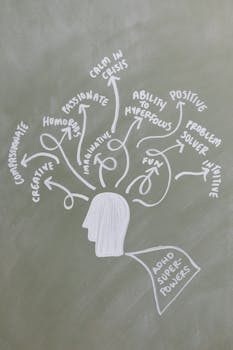What is adhd?

What is adhd?
Attention-Deficit/Hyperactivity Disorder, commonly known as ADHD, is a term that often pops up in discussions about education, parenting, and even workplace dynamics. With millions of children and adults affected by it, ADHD has increasingly become a topic of interest in our society. But what does it really mean? Understanding ADHD is pivotal, not only for those diagnosed but also for families and educators who interact with these individuals every day.
Understanding ADHD
ADHD is a neurodevelopmental disorder, which means it affects the brain’s development and functioning, particularly in areas that control attention and impulse regulation. This disorder is usually diagnosed in childhood, but its effects can persist into adulthood, presenting various challenges that can impact daily life.
Definition of ADHD
ADHD is characterized by persistent patterns of inattention, hyperactivity, and impulsivity that interfere with daily functioning or development. According to the National Institute of Mental Health, symptoms can vary widely among individuals, leading to misunderstandings about the condition.
Prevalence and Demographics
ADHD is one of the most common neurodevelopmental disorders in children. Estimates suggest that around 5% of children and about 2.5% of adults are affected by ADHD globally. It is important to note that ADHD does not discriminate; it can affect individuals from all backgrounds and walks of life. Interestingly, it tends to be diagnosed more frequently in boys than girls, possibly due to differences in behavior that are more noticeable in boys.
Symptoms of ADHD
Recognizing the symptoms of ADHD is crucial for timely intervention and management. The core symptoms are generally categorized into three groups: inattention, hyperactivity, and impulsivity.
Inattention
Individuals with ADHD often struggle to maintain focus. Some common signs of inattention include:
- Difficulty organizing tasks and activities.
- Frequently losing items necessary for tasks (like keys or books).
- Avoiding tasks that require sustained mental effort.
- Easily distracted by extraneous stimuli.
These challenges can hamper academic and professional performance, leading to frustration and low self-esteem.
Hyperactivity
Hyperactivity involves excessive movement and energy, which can be disruptive in various settings. Symptoms may include:
- Fidgeting or tapping hands or feet.
- Inability to stay seated in situations where it is expected.
- Running or climbing in inappropriate situations.
- Talking excessively or interrupting others.
These behaviors can be particularly challenging in structured environments like classrooms or offices.
Impulsivity
Impulsivity is characterized by hasty actions without considering the consequences. Key symptoms include:
- Blurting out answers before questions have been completed.
- Difficulty waiting for one’s turn in conversations or activities.
- Making rash decisions without considering potential dangers or outcomes.
This impulsive behavior can lead to significant social and academic challenges.
Causes and Risk Factors
Understanding what causes ADHD can help in managing and preventing its effects. While the precise cause remains unclear, a combination of genetic and environmental factors is believed to contribute.
Genetic Factors
Studies suggest that ADHD runs in families, indicating a strong genetic component. Children with a parent or sibling diagnosed with ADHD are at a higher risk of developing the disorder themselves. According to research, genes related to dopamine regulation may play a vital role in ADHD’s development.
Environmental Influences
Environmental factors can also contribute to ADHD. For instance, prenatal exposure to substances like tobacco, alcohol, or certain toxins may increase the risk. Complications during pregnancy and birth, such as low birth weight or premature delivery, have also been associated with a higher likelihood of developing ADHD.
Management and Treatment Options
Managing ADHD is a multifaceted process, often involving behavioral interventions, medication, and practical coping strategies.
Behavioral Interventions
Behavioral interventions are geared towards helping individuals modify their behavior. Techniques may include:
- Positive reinforcement for desirable behaviors.
- Structured routines to enhance organization.
- Social skills training to improve interpersonal interactions.
These interventions can be effective in helping individuals navigate life’s challenges and improve their functioning.
Medication Options
Medications are often prescribed to help manage symptoms of ADHD. Stimulants like methylphenidate and amphetamines are commonly used and have been shown to improve focus and control impulsivity. It’s essential to work closely with a healthcare provider to find the right medication and dosage, as responses can vary significantly.
Coping Strategies for Individuals with ADHD
For those living with ADHD, implementing practical strategies can make a world of difference. Here are a few tips:
- Create a structured environment: Use planners or digital calendars to keep track of tasks and deadlines.
- Break tasks into smaller steps: Tackling smaller, manageable pieces can reduce feelings of being overwhelmed.
- Limit distractions: Find a quiet workspace when focusing is necessary, and use tools like noise-canceling headphones.
- Practice mindfulness techniques: Mindfulness can help improve attention and reduce impulsivity.
Conclusion
ADHD is a complex disorder that affects countless individuals and their families. By understanding its symptoms, causes, and management strategies, we can foster a more supportive environment for those affected. If you or someone you know is struggling with ADHD, don’t hesitate to reach out for help. Resources are available, and support from professionals can make a significant difference in navigating life’s challenges related to this disorder. For more information, consider visiting Mayo Clinic’s overview on ADHD to learn about symptoms, causes, and treatment options. Remember, knowledge is power, and understanding ADHD is the first step toward effective management.